


FARNBOROUGH WORKHOUSE
On the journey from Locksbottom to Farnborough Village you may notice on the left an old chapel, just after the entrance to the Princess Royal University Hospital and amongst the hospital staff flats. It is the last existing building from the Bromley Union Workhouse and is still in use today. The Workhouse was constructed in 1844 in response to the 1834 Poor law Amendment Act. The story though goes back to Queen Elizabeth 1st , whose Parliament passed the 1601 Poor Law, which confirmed that it was the responsibility of the Parish Council to provide relief and support for the aged, poor, sick and orphan children of their respective Parish - a benevolent proposal, which inevitably was at a cost to the ratepayers of the Parish to provide.
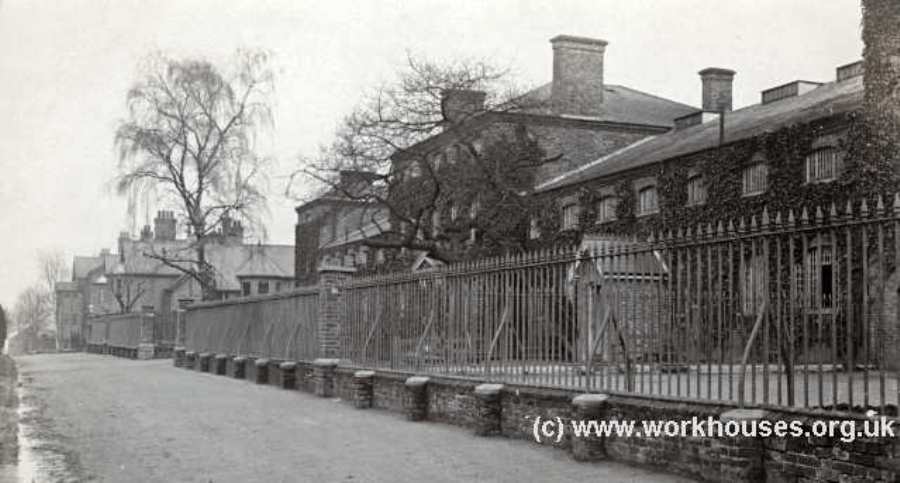 |
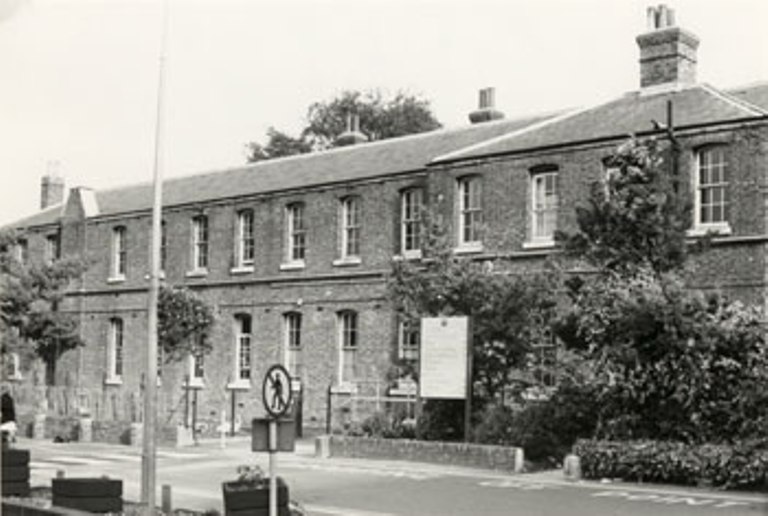 |
| Views of the Workhouse c 1908, click images to enlarge | |
This caused members of the Parish Council to become critical of who should or should not receive support. Therefore, following criticism of whether the receiver of aid actually came from the parish or were capable of paid employment, further Acts over the next 100 years were passed in an attempt to ensure that only the deserving of the Parish actually received aid. This led to the Workhouse Test Act of 1723 which promoted the construction of workhouses, where the poor, old and sick had to reside in order to receive aid, and those capable of work had to secure employment.
In Bromley the Workhouse was constructed in 1731 along the main road to London, next to the former burial site of plague victims, almost opposite Farwig Lane. It is now long gone.
Another, known as the Cudham Workhouse, now converted into a cottage, can be seen at Leaves Green as you approach the Kings Head from Bromley, see panel to the right.
However, the growing demand and costs of running individual workhouses eventually led to the 1834 Poor Law Amendment Act. This proposed the Workhouse Union, whereby, Parishes amalgamated to construct a single purpose-built Workhouse, where the people in need of assistance would have to live and often work in order to receive shelter, food and clothing that the new workhouses would provide. For children it would also include some elementary teaching.
It had been proposed to construct a Workhouse at Bromley Common within the Enclosure Act of the Common in 1821. However, the intended enclosure took so long in planning and negotiations with interested parties that by the time agreement had been reached the need to establish a Workhouse within the said area had been overtaken by the Poor Law Act. . Consequently the Union Workhouse was constructed in 1844 at Locksbottom on the site of the present hospital. Included within the initial construction was the chapel to provide the spiritual support and guidance, as well as the other services of the church. However, as the Workhouse served the needs of 16 local parishes most funerals were directed to the deceased’s original parish to meet the cost of burials.
The former workhouse site is now the location for the Princess Royal University Hospital. www.pruh.kch.nhs.uk which opened in 2003. Modern housing blocks occupy the front of the site facing the main A21 road (Farnborough Common), with the hospital to the rear.
Bob Donovan
Workhouse Site Map
A small lodge lay at the entrance to the site and a chapel was erected at the south-west of the workhouse. The site later expanded considerably to the north and east.
 |
All but the chapel have now been demolished, to be replaced by the modern hospital and new housing.
With acknowledgements to
www.workhouses.org.uk/Bromley/ © Peter Higginbotham.
Workhouse Records 1903 - 1915
One day during the dark period of the war, the edict went forth that
all paper must be sent for salvage and waste. On one occasion I noticed
in the back of the collecting lorry some old leather bound volumes
which I impounded temporarily for inspection. They proved to be records
from the old workhouse master's office from 1903 to 1923 and contained
pages of flimsy paper consisting of duplicates of old correspondence.
Before the days of duplicating paper copies were preserved by placing
each letter on damp flimsy under a powerful press. The following
extracts from these volumes provide interesting sidelights on the old
times from 1903 to 1915
1903 We read that the institution organised its own fire brigade owing
to the danger of fire from the paraffin lamps in use. In this year the
first typewriter was purchased for the master and his clerk.
1904 The
master purchased 100 tons of stable manure at 6/-a ton (30p) for the
grounds, which were cultivated by the healthy male inmates.
1905 There
were 74 healthy children in the institution occupying the buildings
which now house the psychiatric unit. They attended the Farnborough
Village school daily.
1906 The master purchased 20 pigs to reduce the
cost of feeding the inmates but the piggeries were soon after abolished
owing to an outbreak of swine fever.
1907 The master appears to have had
trouble with the gate porter who complained that his health would not
stand up to the strain of doing the master's office work as well as
guarding the gate.At this time mothers and babies occupied the same
beds and a special request was made for the provision of cots so that
babies up to the age of two could sleep alone.Tobacco at 3¾d an ounce
(about 1p) was supplied to the male inmates in return for work done. It
is a reflection on the times that many young able bodied men were
destitute inmates and 15,000 tramps passed through the casual ward each
year.
1908 The master was asked to produce schemes for effecting
economies. His first proposal was to reduce the tobacco issue and to
limit the amount of the laundry sent from the wards.At this time charge
nurses were the equivalent of ward sisters -their off duty was one day
a month and one half day each week.There appears to have been a
flourishing ophthalmic department as it is reported that the master
purchased a gross of spectacles at 4½d each.
1909 There was no linen room in spite of the large number of female
inmates and the master reported that the Church Army was not carrying
out the repair work properly.One of the inmates was a veteran of the
Crimean War and made a complaint that his medals had been lost, or
stolen.The chopping of wood and the breaking of stones did not provide
sufficient work for the inmates so the master obtained a flour grinding
machine apparently worked by hand. This was unpopular and it was
reported that the men were suspected of dropping stones or nails into
the machinery.
1910 The solitary maid in the nurses home resigned to take
up a post as nurse at another infirmary (no doubt attracted by the
salary of £10 per annum).The master reported that the annual
expenditure on stimulants was £75 to provide:79 gallons of spirits231
gallons of beer.The staff, male and female, were allowed beer with all
meals but there is no record of what happened to the spirits.In this
year occurred the death of King Edward VII and the inmates were ordered
to attend a memorial service in the present dining hall. Also during
the week in question the inmates were excused from bathing.Albert and
Victoria wards were built at about this time.
1914 The first telephone
installation was purchased for £8 10s 1d (£8 50p) complete with wire
and four wall instruments.
1915 The first motor ambulance was purchased.
John F Hackwood
The article above is reproduced with permission from the magazine of the Bromley Borough Local History Society.
LOCKSBOTTOM
Cudham Workhouse
These cottages were built as Cudham Parish Workhouse in 1731. A parliamentary report in 1777 recorded the workhouses in operation in Bromley for up to 80 inmates.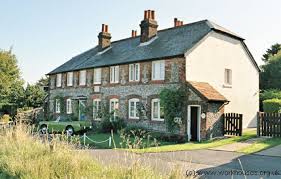
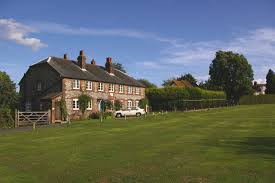
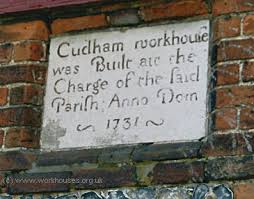
Despite the name, this would no longer be considered to be in Cudham but in nearby Leaves Green.
It was divided into three cottages (Ramblers Rest, Jasmine Cottage and Green View) some time in the early 20th century. Rambler's Rest once served as a café.
The building is Grade ll listed (1973)